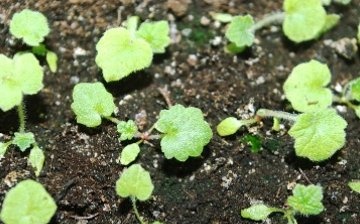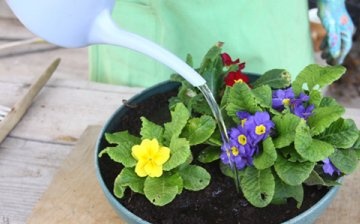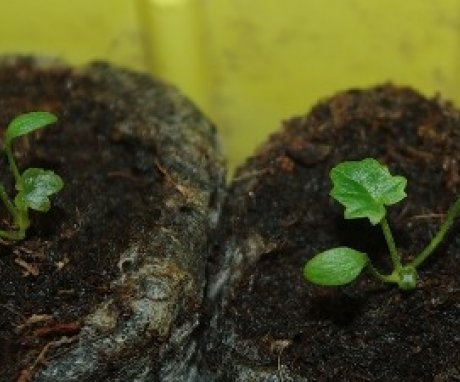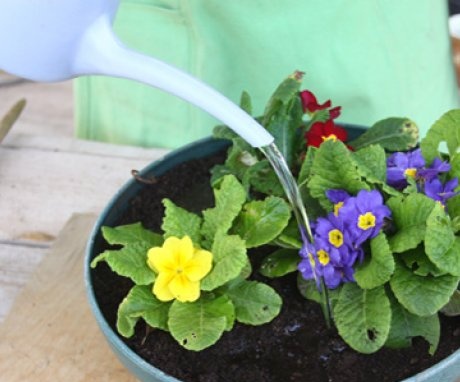How to grow primrose from seeds
After a gray boring winter, you really want to enjoy the riot of spring colors and aromas. Nothing pleases like the first flowers: primrose, tulips, lilac... Primrose blooms before everyone else, for which gardeners love it. In early spring, the first small bushes with an incredible amount of colorful flowers make your site amazingly bright and beautiful. This splendor of color in the garden will last until the frost.
Content:
Primrose characteristic
Initially primrose was considered a medicinal flower. The ancient Greeks believed that she was able to cure all diseases. It became especially popular in the 17th century. The inhabitants of Belgium and England were the first to decorate their estates with this delightful flower. The primrose very quickly won the hearts of gardeners, and they were ready to pay big money for it.
Nowadays, primrose is loved not only for its decorative properties. In Germany, primrose flowers are dried and used in the production of tea. There is an opinion that this tea strengthens the nervous system and has a beneficial effect on the state of blood vessels. The population of England eats primrose leaves in salads, and the roots are used as a spicy addition to various dishes.
Flowers are usually brightly colored with edging along the edge and contrasting eyes. Typical colors: brown, blue, white, purple, yellow, violet. Depending on the shape of the inflorescence, primroses are divided into umbrella, capitate, cushion, candelabra, tiered and bell-shaped.
In care, this is an unpretentious plant, therefore to grow it can even be an inexperienced gardener. It is important not to forget to water it in hot weather and fertilize it 3 times per season. In early spring, the plant is fed with complex mineral fertilizers, in summer - with organic fertilizers and in autumn - with phosphate-potassium fertilizers.
Growing primrose from seeds
Of course, the easiest way is to buy ready-made seedlings and plant them on your site. But it is much more interesting to grow primrose yourself. So how to grow primrose from seeds and how to care for seedlings?
Gardeners recommend sow seeds twice a year: in February and March. This way you get the plants that bloom one after the other, creating the feeling of continuous flowering.
Seeds of primrose are sown in March, three in a pot or box filled with loose fertile soil. It is desirable that it be a mixture of garden soil and organic fertilizers. It is recommended to use coarse sand as drainage. The ground is well crushed so that the seeds do not fall through. They should not be deepened into the soil, it is enough just to scatter them on top.
To create optimal conditions for seed germination, the pots are covered with cling film and stored in a cold place. If the crops are not covered with a film, then it is necessary to constantly moisten the soil, preventing it from drying out. Seeds covered with foil should be opened and aired daily, and condensation should be removed from the foil.
Usually, it takes about 2-3 weeks from the moment of sowing to the appearance of the first leaves. The leaves that have appeared must be examined and thinned out, leaving only the strongest shoots. After thinning, cover the sprouts with foil again. When they grow to 5 mm, you can open the pots and put them in a sunny place.
Planting primrose in open ground
Primrose can be planted in open ground only if you are sure that frosts are no longer expected. This is usually the end of May - mid-June.
When planting primrose, you should be very careful with its sensitive root system. In order for this amazing flower to easily take root in the garden, it is necessary to periodically apply complex fertilizers. For a few days after planting, while the leaves get stronger, cover them with foil overnight. Thus, a microclimate already familiar to them is created.
The best place to plant is in shaded areas, as primrose is a mountain plant and does not like direct sunlight. It's great if the sun's rays will reach her in the morning, and during the day she will be in the shade of other plants in your flower bed.
The most important point in leaving regular sufficient watering is necessary, since in nature primroses grow only on well-moistened and drained soils. It is imperative to ensure that no moisture stagnation forms, as the roots of the plant can rot.
It is advisable to choose a place with loose nutrient soil on the site, primrose will not grow on clay soil. If the soil on your site is not of the best quality, do not despair. You can improve it yourself with sand, sphagnum moss or organic fertilizers.
Organic fertilizers will not hurt even if the soil is light but poor in nutrients. Decomposed humus, weathered peat, garden compost will help improve the structure of the soil and its water regime, as well as enrich it with nutrients.
If you want to achieve lush flowering, add potash and nitrogen fertilizers. And keep feeding the plants throughout the growing season.
The primrose grows rapidly, so 3-4 years after disembarkation, you can start dividing it. Experienced gardeners do this 14 days after the first flowering. It is better to do division in the evening or in cloudy weather, so as not to expose the root system to sunlight. The plant is dug up, divided and planted in prepared holes.
By following these simple recommendations for growing and caring for primroses from seeds, you can create beds of incredible beauty. A bright multi-colored parade of flowers will delight the eye and give a good mood from early spring to the coldest days.













